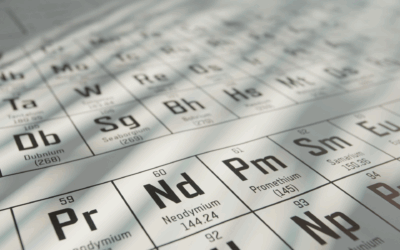The FDA “Hazard Analysis and Risk-based Preventive Controls for Human Food” regulation, referred to as Preventive Controls for Human Food (PCHF), defines “Hazard” as “any biological, chemical (including radiological), or physical agent that has the potential to cause illness or injury.” The parenthetical in that definition is a new descriptor to those who have conducted Hazard Analysis for developing a HACCP Plan.
Food Safety Preventive Controls Alliance (FSPCA) in its PCHF Training Curriculum (2016):
- identifies potential sources of radiological hazards as:
- Contaminated soil, water or air
- Ingredients with radionuclides
- Packaging materials
- provides as examples of radionuclides:
- radium-226, radium-228, uranium-235, uranium-238, plutonium-239, strontium-96, iodine-131, cesium-137
- admits that radiological hazards are rarely encountered in food; however, when they do occur, they can present a risk.
FSPCA (2016), in the narrative discussion of the training curriculum, states:
- The World Health Organization (2011) says radiological hazards in food would have to be consumed over a period of time to present a risk.
- The most common way these radionuclides are incorporated into foods is through “use of water that contains a radionuclide” during food production or manufacture.
- Radiological hazards may originate from a nuclear facility–due to accidental release or damage created by a natural disaster.
As you focus on radiological hazards in the Hazard Analysis, consider the source of your water (private wells?) and the sources of product components–raw material, ingredients, packaging material–(Chernobyl? Fukushima?).
Water from Private Wells
In certain locations in the United States, high concentrations of radium-226, radium-228, uranium-235 and uranium-238 have been detected in private water wells (FSPCA, 2016). Of particular concern are regions of the country that were affected by atomic-bomb testing in the 1940s and 1950s [in and around New Mexico (Los Alamos), Washington (Hanford), Utah (Dugway/Wendover) and Nevada (Nellis Air Force Base)]. This should be considered in the Hazard Analysis of water (as a component) originating from these regions but would not be applicable in most parts of the United States (FSPCA, 2016).
Product Components from Chernobyl
The April 1986 explosion at a nuclear plant in Chernobyl (then part of the USSR, now a city in Ukraine) sent a plume of radioactive fallout across large swathes of Europe (Osborn, 2016). Forests around the accident site (and within hundreds of miles in every direction because it was transported in the atmosphere and came back to Earth in rainfall) became repositories of radioactive contamination (Greenpeace, 2016). According to scientific tests, overall contamination from key isotopes such as cesium-137 and strontium-90 has fallen somewhat, but lingers–especially in forests.
The people of Russia, Ukraine and Belarus continue to eat and drink foods with dangerously high radiation levels (Osborn, 2016). In some cases, such as in grain, radiation levels in the contaminated area–where an estimated 5 million people live–have actually increased in the 30 years since the disaster.
Greenpeace (2016) reported “And just as this contamination will be with them for decades to come, so will the related impacts on their health. Thousands of children, even those born 30 years after the Chernobyl disaster, still have to drink radioactively contaminated milk. “Economic crises convulsing Russia, Ukraine and Belarus have resulted in reductions in, or eliminations of, programs to control radiological hazards (Osborn, 2016).
Long-term exposure to radiation can lead to severe illnesses. Doctors in the areas worst affected by the Chernobyl disaster have long reported a sharp rise in certain cancer rates (Greenpeace, 2016).
As companies consider radiological hazards in their Hazard Analysis, they should investigate the geographical location and history of the country-of-origin for each component–raw material, ingredients, and packaging material–of their final product.
Product Components from Fukushima
In 2011, radiation leaked from the Fukushima Daiichi Nuclear Power Plant in Japan after an earthquake and tsunami. Shortly thereafter, radioactivity was detected in milk, vegetables and seafood produced in areas neighboring the damaged power plant (World Health Organization, 2011).
Greenpeace (2016) conducted tests in areas contaminated by the Fukushima disaster and found that forests have become repositories of radioactivity that will pose a risk to the population for decades–or even centuries–to come. They further stated that the Japanese governments’ decontamination efforts had so far been inadequate, and left the door open to recontamination of areas deemed to have been cleared.
Five years after the disaster, only 25% of American’s were comfortable buying and eating food imported from Japan, even though 61% felt “protected” by US regulatory efforts to ensure safety of the food supply (Institute of Food Technologists, 2016). Saulo (2016) characterized consumer’s feeling as “suspicious and nervous”, and concluded that latent distrust remains even when specific concerns seem absent; there doesn’t seem to be anything that can be done to change people’s behavior right now.”
Kennedy (2016) believes that we shouldn’t be importing shellfish from Japan right now; but because “fish from Japan” may have come from anywhere in the world, they’re probably not contaminated and the FDA sampling program is more than sufficient.
The circumstances in Japan related to possible contamination of food should be considered as food companies conduct a Hazard Analysis of food or food-product components (raw material, ingredients, packaging material).
REFERENCES:
Food Safety & Quality. 2016. Americans fear Japanese-imported food. July 21 issue.
FSPCA. 2016. Preventive Controls For Human Food, Training Curriculum, Leader Instructor Guide.
Greenpeace. 2016. Nuclear scars: the lasting legacies of Chernobyl and Fukushima.
Institute of Food Technologists. 2016. Survey conducted at IFT Annual Meeting.
Kennedy, Shaun. 2016. From a speech presented by Dr. Kennedy who is Director of the National Center for Food Protection and Defense.
Osborn, Andrew. 2016. Eating radioactive food 30 years after Chernobyl. Reuters, March 10 issue.
Saulo, Aurora. 2016. Food, fear and fury. University of Hawaii-Manoa.
World Health Organization. 2011. FAQs: Japan nuclear concerns.



